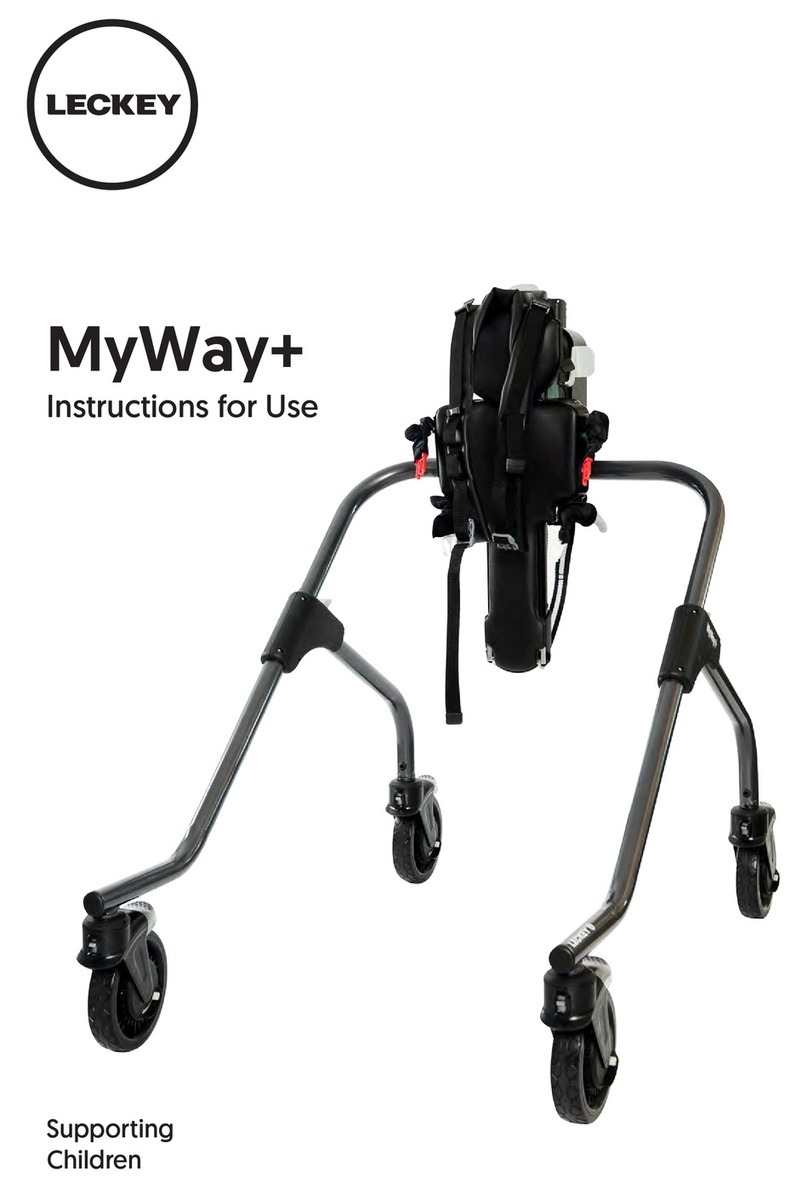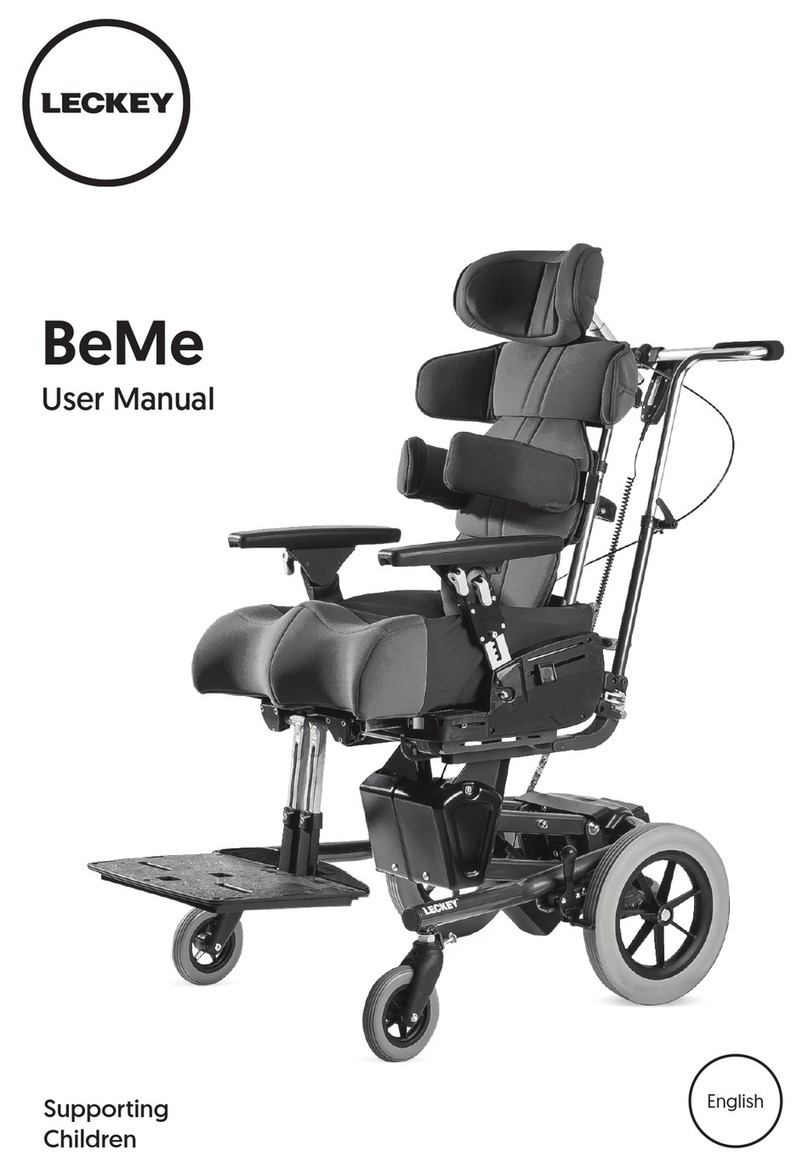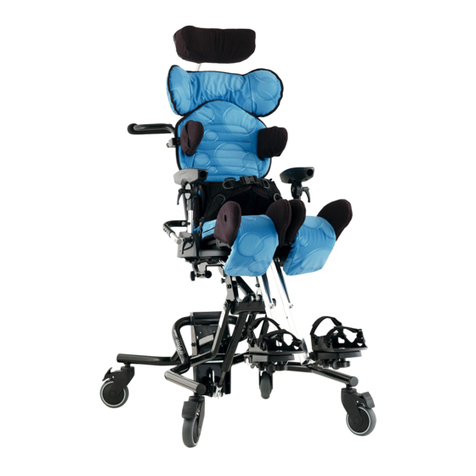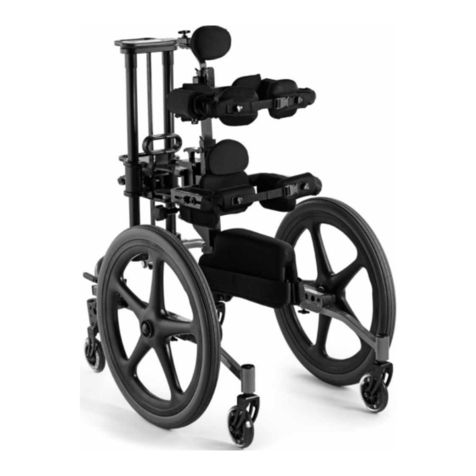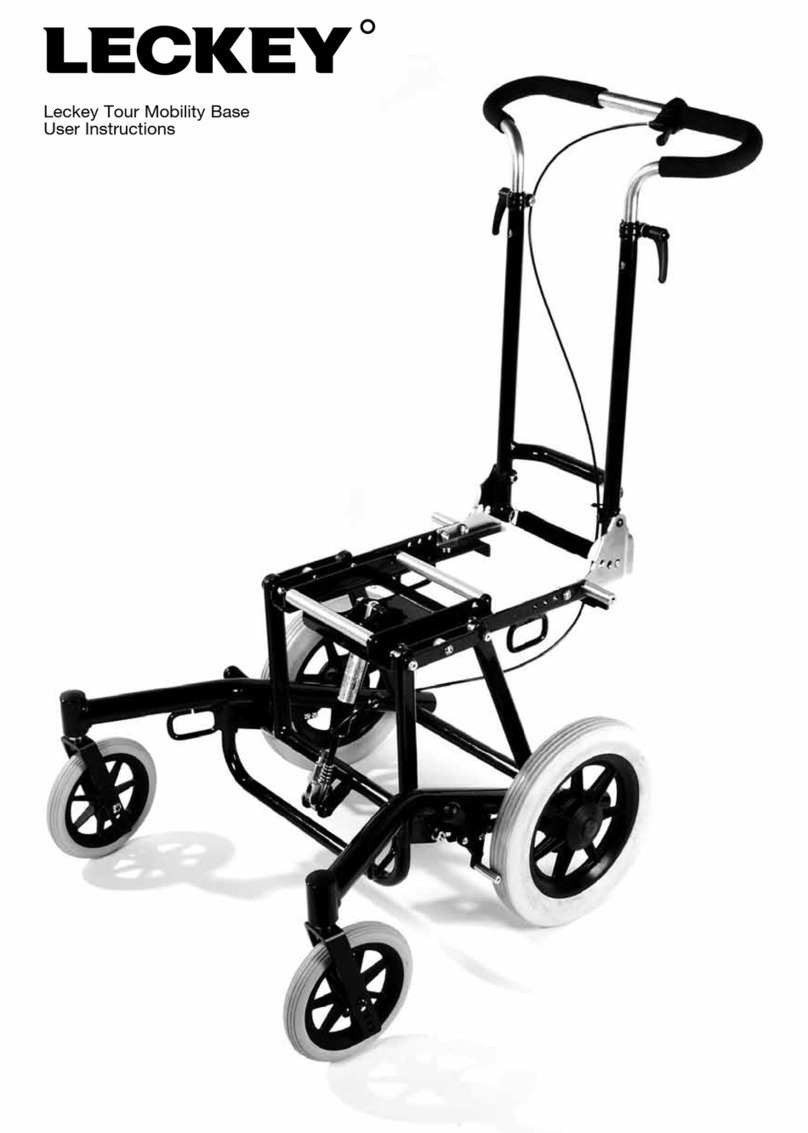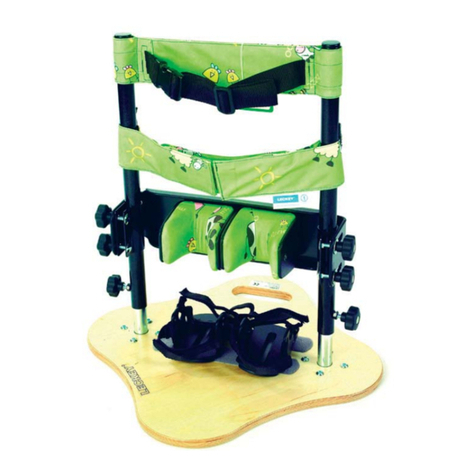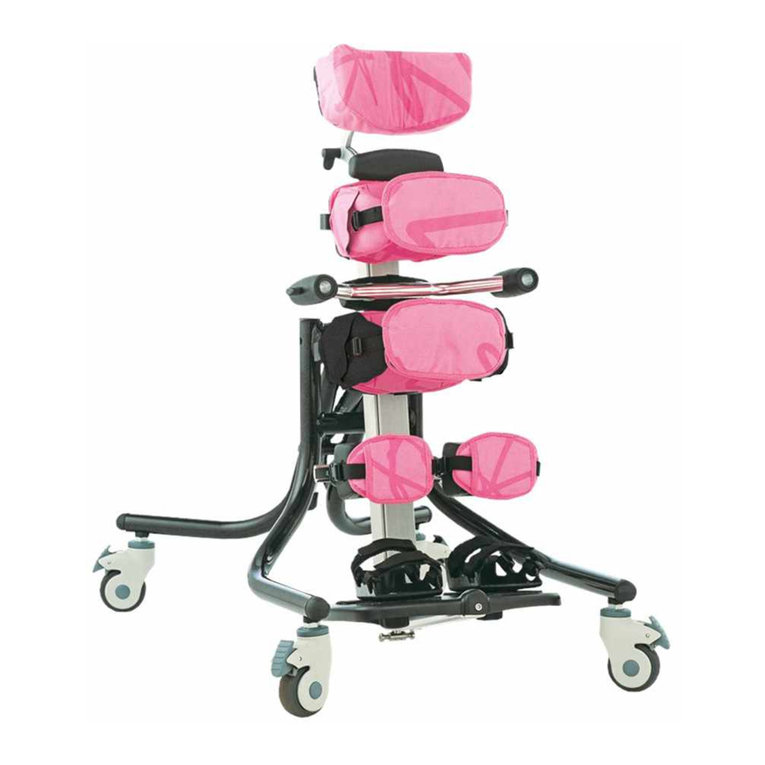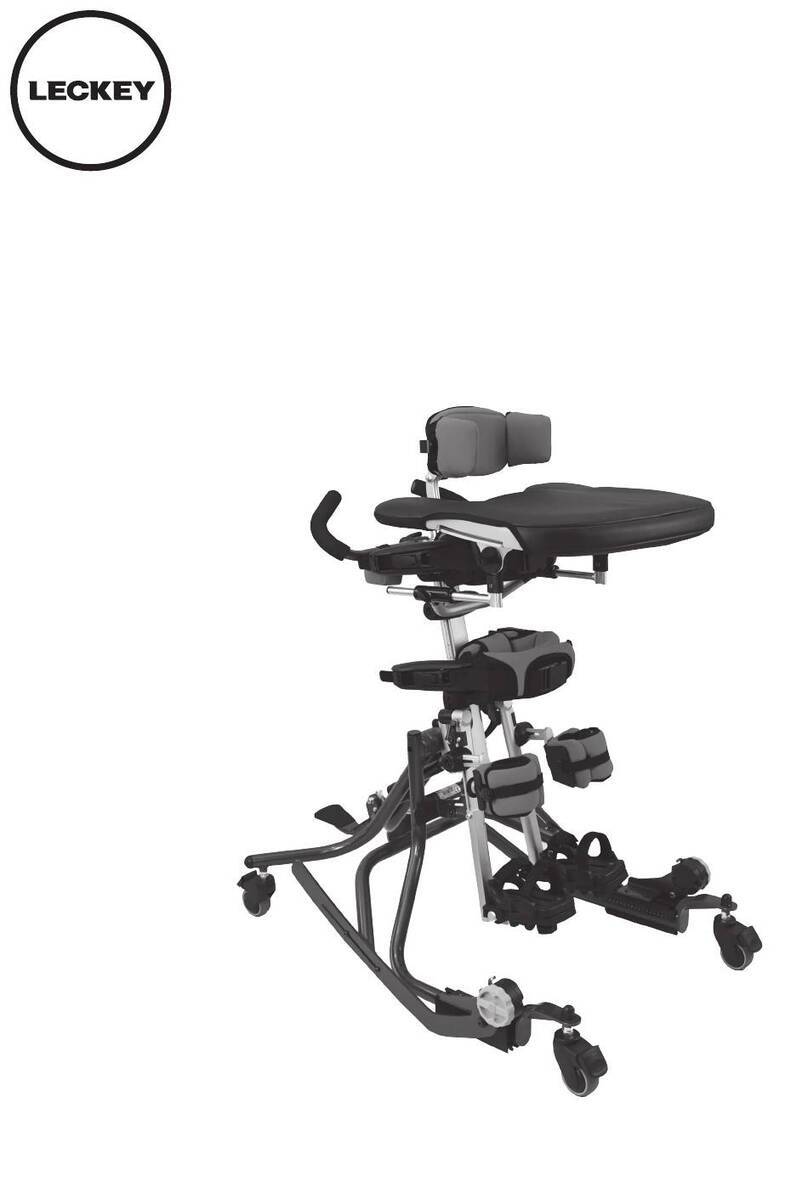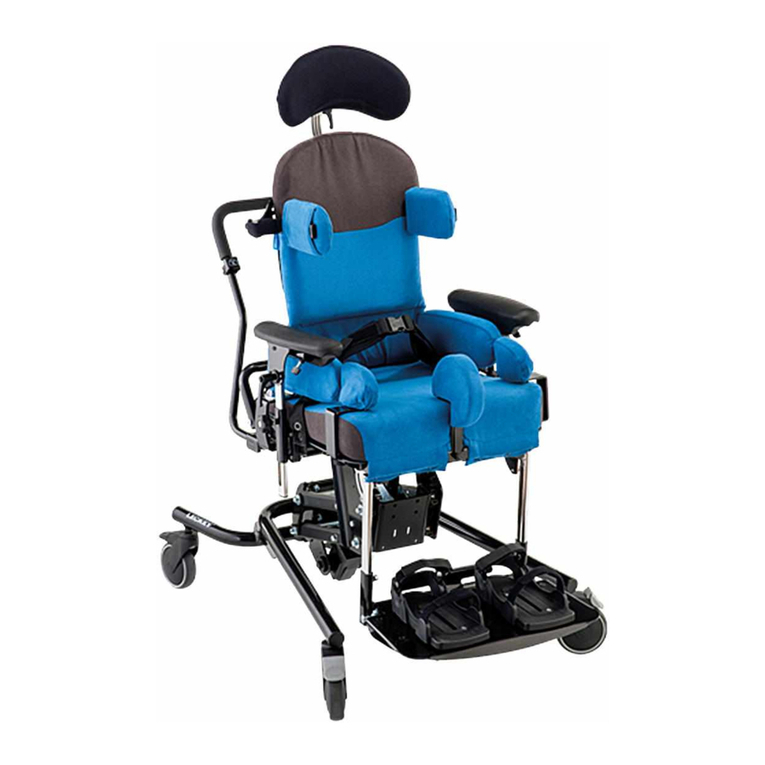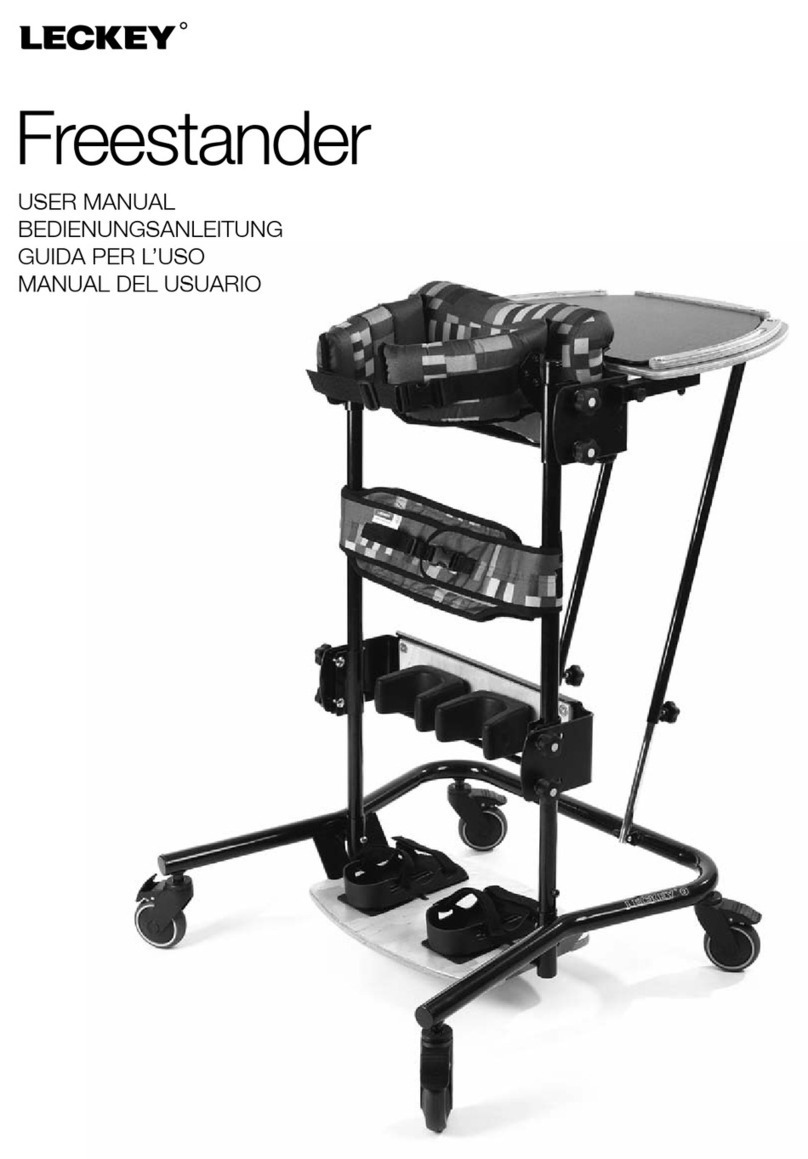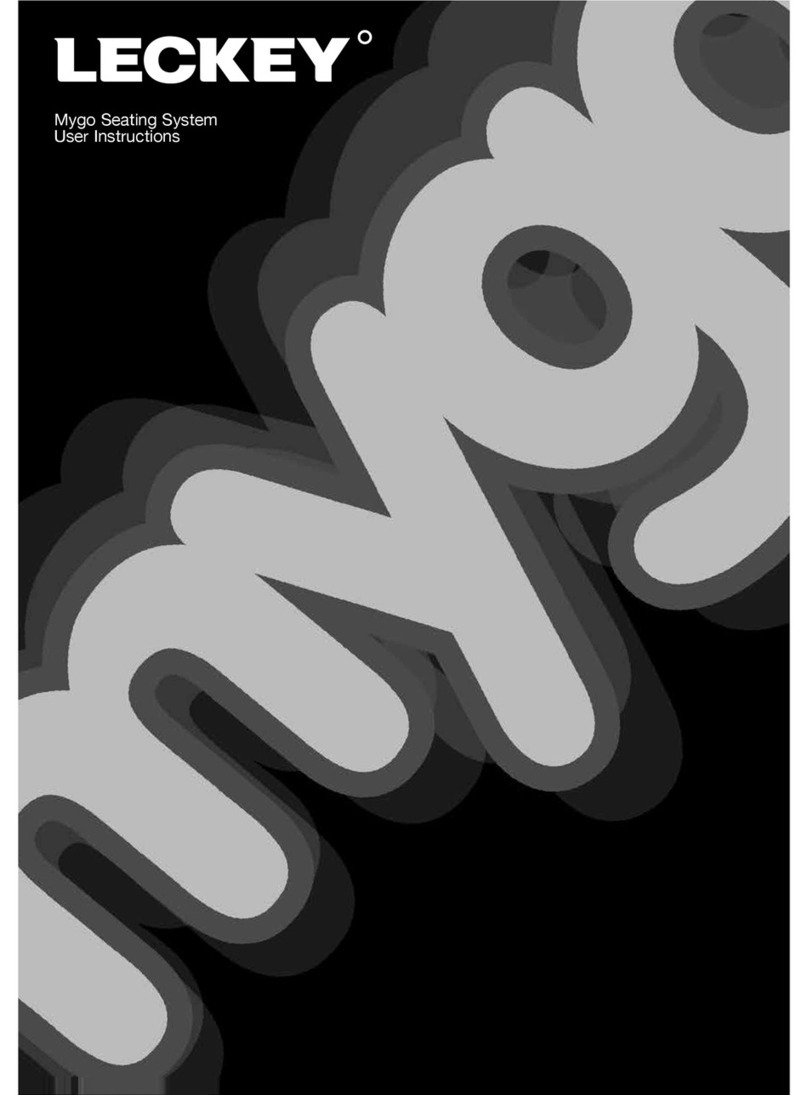p.6 MyWay User Manual
6.0 Safety
• Always read user
instructions fully
before use.
• Users should not be
left unattended at
any time whilst using
Leckey equipment.
• Only use Leckey approved
components with your
product. Never modify the
product in any way. Failure
to follow instructions may
put the user or carer at
risk and will invalidate the
warranty on the product.
• If in any doubt to the
continued safe use of your
product or if any parts
should fail, please cease
using the product and
contact our Customer Care
Team or your local dealer
as soon as possible.
• Carry out all relevant
positional adjustments
and ensure that they are
securely fastened before
you put the user into
this product.
• Never leave the product
on a sloping surface,
greater than 5 degrees.
Always remember to lock
all the castors.
• Only hold onto the frame
or use the adult handles
accessory to steer and
move the product from
one area to another. Never
use the upper support unit
or any accessory for this
purpose.
• The product contains
components which could
present a choking hazard
to small children. Always
check that locking knobs
and bolts within the user’s
reach are tightened and
secure at all times.
• Clean the product
regularly. Do not use
abrasive cleaners. Carry
out maintenance checks
on a regular basis to
ensure your product is in
good working condition.
• Check all weight bearing
components are fully
secured before removing
manual/hoisting support
i.e. saddle, buckles/cords
attaching harness to frame
and shoulder straps.
• The white buckles must be
secured rst and opened
last during set up and exit
from the device. The white
buckles take the child’s
weight if they are not
bearing weight through
their legs.
• If the groin straps have
not been tted securely,
the child may slide down
a little within the harness.
If this results in the
harness digging into
the child’s armpits, then
the harness needs to be
reapplied more securely.
The saddle provides
additional support if
required.
• If hoisting the child from
the device, ensure the
groin straps are secured.
• Failure to follow the user
instructions may put the
child at risk.
• The product should be
stored carefully and not
used if any parts are faulty.
• Communicate with the child
regarding any positional
adjustments to be carried
out while the child is
supported in the device.
• Leckey products comply
with re safety regulations
in accordance with
EN12182. However the
product contains plastic
components and therefore
should be kept away from
all direct sources of heat
including naked ames,
cigarettes, electric and
gas heaters.
• The product is designed
for indoor and outdoor use
on smooth, level surfaces.
The product is not suitable
for use on uneven or rough
terrain. When not in use,
the product should be
stored in a dry place that is
not subjected to extremes
of temperature. The safe
operating temperature
range of the product is
+5° to +40° Celsius.
